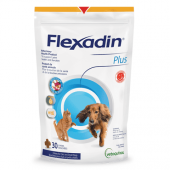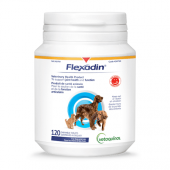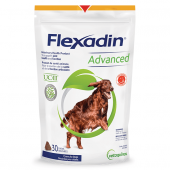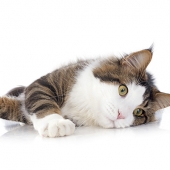Those love handles won’t impact how much you love your pet, but they may affect their health and energy level. Below, Veterinarian Dr. Sarah Myers shares some valuable advice to help your pet maintain a healthy body weight.
How to tell if your cat or dog is overweight
Veterinarians evaluate a pet’s weight by a method called body condition scoring. “The most basic ways to assess this are by feeling the amount of fat over the ribcage, and looking at the pet from above,” says Dr. Myers. “You should be able to feel the ribs but have a small amount of fat under the skin, and there should also be a tapering of the waist behind their ribcage.”
Dog food and cat food: how much should you give?
Most pet foods will come with a feeding guide that should be appropriate for an average animal in good health. “If your pet is trying to lose or gain weight, you can ask a member of the veterinary team to calculate the number of calories they should be eating per day,” says Dr. Myers. This can be used to determine how many cups of dry food or cans of wet food should be given daily.
Food quality shouldn’t impact weight
All commercially available foods have to meet certain standards prior to sale and provide a balanced diet. The type of food makes a bigger difference. “For example, certain foods are formulated for weight loss and would be lower in calories, and generally higher in fibre than standard diets,” explains Dr. Myers. This information is generally clearly marked on the packaging.
Switching pet food: take it slow
Avoid frequently switching from one brand of dog or cat food to another, as this may have unpleasant side effects. “Many dogs and cats experience gastrointestinal upset if their food is changed abruptly,” says Dr. Myers. Any transition from one food to another should occur slowly over about a week, gradually adding more of the new food and decreasing the amount of the previous one. This requires some basic planning to avoid running out of old food!
Pet exercise and weight control
Depending on their size, age, breed and health status, cats and dogs need varying levels of exercise - but they all need it. For dogs, it can be as simple as walking, running, catching a ball or playing chase in the backyard. For cats, a few play sessions of chasing a ball or feather toy can be spaced out throughout the day.
Speak to your veterinary team
If your pet has any underlying health concern, ask your veterinary team about food and treat recommendations. If you notice a sudden drop in energy levels or willingness to exercise, this requires attention. “Older pets may have developed osteoarthritis, making it painful for them to go for the walks they previously enjoyed,” says Dr. Myers. “It could also be the result of conditions such as thyroid abnormalities or heart issues, and further investigation could be needed to assess their health.”






